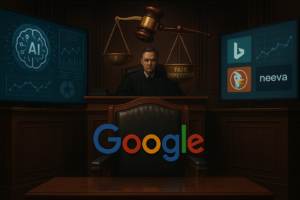Digital Renaissance: AI and the Virtual Restoration of St. Peter’s Basilica
In a groundbreaking collaboration, the Vatican and Microsoft have unveiled a stunning AI-generated digital twin of St. Peter’s Basilica. This initiative not only enhances virtual tourism but also revolutionizes conservation efforts by tracking structural changes and visitor management with precision.
As technology advances, our ability to experience historic sites from the comfort of our homes has taken a monumental leap. A prime example is the Vatican’s recent partnership with Microsoft, which has led to the creation of an AI-generated digital twin of St. Peter’s Basilica. This innovative project encapsulates the intersection of artificial intelligence and cultural heritage, allowing enthusiasts worldwide to explore one of the most revered monuments without physically being present.
A New Dimension of Virtual Exploration
The digital twin of St. Peter’s Basilica is based on an extensive collection of 400,000 high-resolution photographs, captured by drones, cameras, and lasers. This wealth of data has been meticulously processed using advanced AI algorithms to create a virtual replica that mirrors the physical structure in remarkable detail. Visitors can now embark on virtual tours, delving into the intricate architecture and art that adorns the basilica, all from their devices.
This virtual experience is not just a feast for the eyes; it serves a practical purpose as well. The AI system can log and analyze data related to visitor traffic, improving the management of the influx of tourists. By understanding peak times and patterns, the Vatican can enhance the visitor experience while maintaining the sanctity and preservation of this iconic site.
Conservation and Preservation Efforts
Beyond tourism, the AI-generated digital twin plays a pivotal role in the conservation of St. Peter’s Basilica. The Holy See can now monitor structural changes and identify conservation needs more effectively. The AI system’s ability to analyze minute details and track degradation over time ensures that any necessary repairs or interventions can be addressed promptly, preserving this architectural marvel for future generations.
This approach not only safeguards the basilica but also sets a precedent for other historical sites around the globe. By leveraging AI technology, cultural institutions can maintain their heritage while adapting to the evolving landscape of tourism and conservation.
Embracing the Future of Heritage Management
The collaboration between the Vatican and Microsoft signifies a broader trend in the application of artificial intelligence in the field of cultural heritage. As more organizations recognize the potential of technology to enhance visitor engagement and preservation efforts, we can expect to see a rise in similar initiatives across the world.
In conclusion, the AI-generated digital twin of St. Peter’s Basilica is a testament to how technology can bridge the gap between history and modernity. As we continue to explore the capabilities of artificial intelligence, the possibilities for enriching our understanding of heritage are limitless. This project not only invites virtual exploration but also ensures the lasting legacy of one of humanity’s most cherished architectural achievements.


